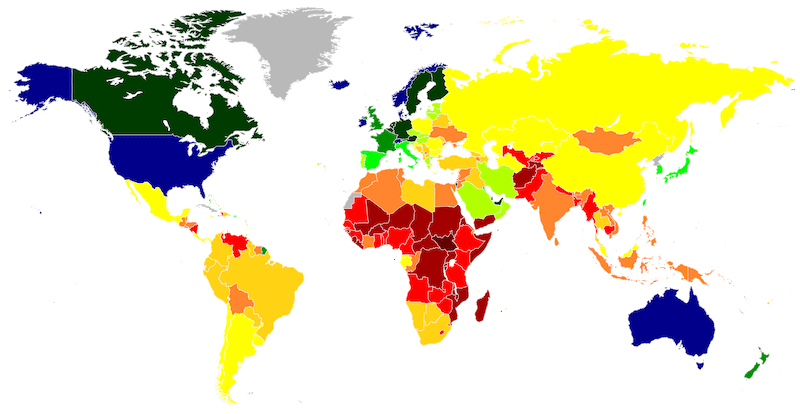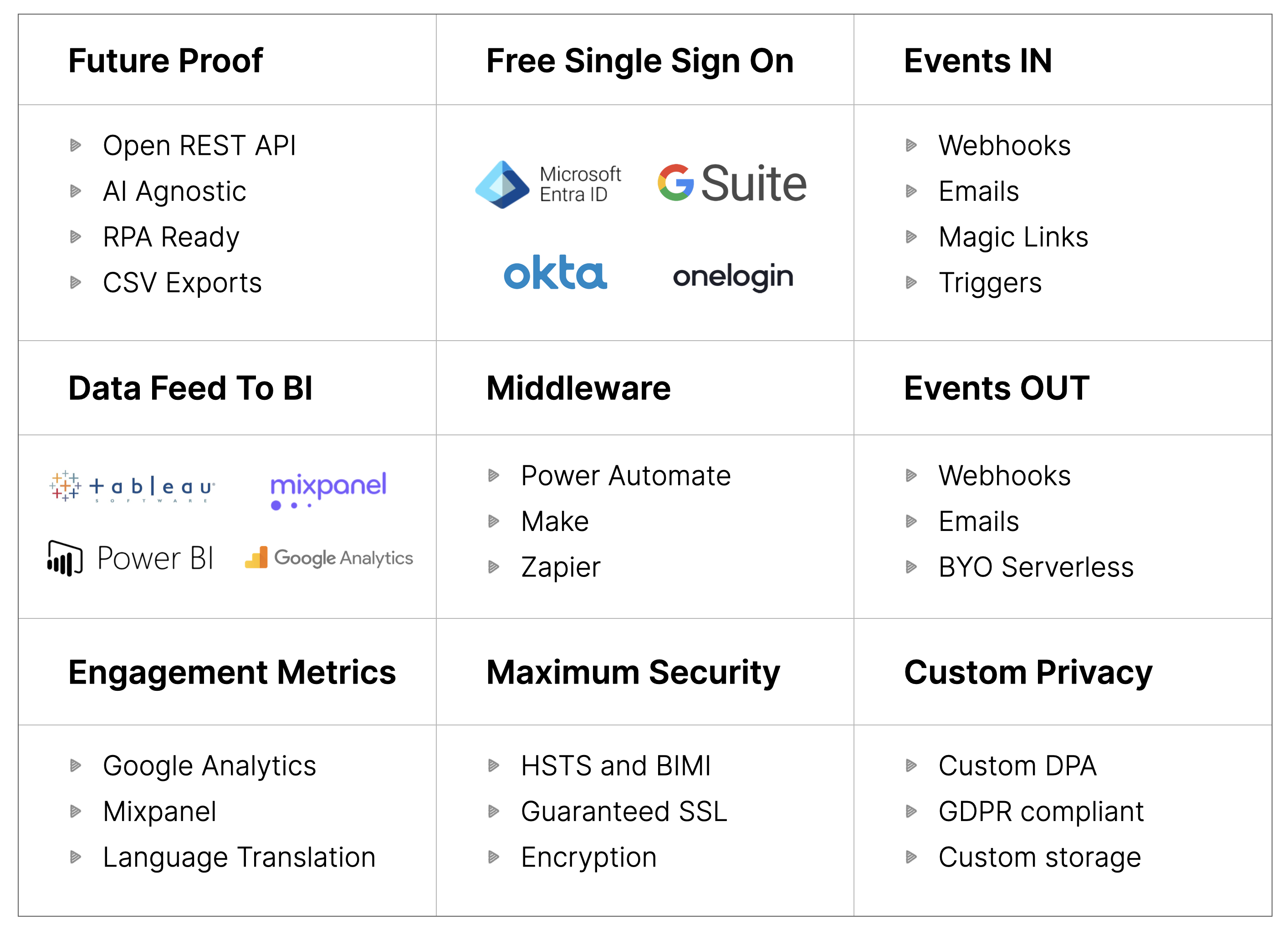Workflow Automation Engine
Turn messy emails and docs into smooth, automated workflows
- Save Time Via Automation – Win back 2 hours/person/day
- Track & Delegate Workflows – To people or AI
- Consistency – Ensure quality outcomes
- Hybrid Workflow Automation – Run people-driven and automated steps
- Discount – For companies in

Start by Tallyfying one recurring process
Perfect for digitizing procedures, form-triggered workflows and approval chains you run manually today. Start with one process then gradually roll it out to all your processes.

Tallyfy® is A Workflow Automation Engine For Anyone
Fed up of ad-hoc emails, projects, tasks and complex software? Run and scale your operations properly with Tallyfy – a multi-function, AI-powered, top-rated workflow automation engine
Just 3 simple steps to digitized workflows
Document, track and automate using a workflow automation engine

Define or upload your template using AI. Optionally add simple if-this-then-that conditionals. Add rich descriptions to capture tribal knowledge on every step.

Launch your process with a form or any other trigger. Invite unlimited guests or coworkers to complete tasks and fill out forms. Tallyfy handles auto-reminders.

Improve your process through feedback and metrics. Add steps run by AI. Automate specific steps if they’re worth it. Practice easy and continuous improvement.
Stop bleeding 2 hours per person, daily - on busywork
Do you know the cost of running workflows manually?
HEARING THIS?
- How do I do this?
- What's the status of this?
- I forgot we had to do that
- What comes next?
START TALLYFYING
- Every workflow - digitized
- Everyone is happy and efficient
- Newbies are auto-trained
- Grow revenue without chaos
TIME IS EVERYTHING
- US average wage is $44/h
- Nobody enjoys busywork
- Free up time for innovation
- Automate mundane stuff
Workflow automation skills without the bills
Need help? We guarantee you can schedule free 25-minute screen-sharing calls with our workflow and rules automation experts for life.
SCHEDULE A CALL

Upto 90% discount forever
Tallyfy is the only workflow automation engine that’s discounted using the GDP-per-capita of your primary country. You won’t find this value in any other rules engine.
Fair Price GuaranteeIT, legal & compliance information

- Open REST API
- SOC 2 Type II
- GDPR compliant
- BIMI and HSTS compliant
- Connectors to middleware
- Free SSO for all
- Webhooks and BI feed
- Language translation
- Bank-grade security
- Enterprise MSA & SLA
- More on integrations
Related Questions
What exactly is Tallyfy?
What is a workflow automation engine?
A workflow automation engine is a digital brain that automatically routes work from one person (or team) to the next. Rather than speaking employees passing work between themselves, that is all handled by the engine – routing of work, notification, tracking, and all that good stuff. Tallyfy is the only platform that’s intelligent and intuitive to automate workflows — you can be confident that nothing will get forgotten and nobody will be unsure of what to do next.
Why do companies need workflow automation?
Without workflow automation, businesses lose hours on manual handoffs, status updates, and follow-ups. Teams spend more time managing work than doing the work itself. By automatically routing tasks, sending notifications, and offering current status on process, Tallyfy’s automation engine eliminates this waste – at the process level – with no human effort.
How does Tallyfy make workflow automation simple?
Unlike other complex BPMN tools, where you need to be a developer to understand them, Tallyfy has a simple “if this, then that” design that anyone can understand. Automate complex tasks in 2 minutes without flow charts or code! The platform also has built-in AI, which instantly builds workflow templates of what you’re doing already.
What makes Tallyfy different from other workflow automation tools?
What sets Tallyfy apart though, is the ease agility that goes with the power of automation. It has some unconventional features such as no-cost, no-login guest access, automatic form-to-workflow conversion and AI-generated boilerplate. The platform offers GDP based pricing with lifetime discounts up to 90% for qualifying countries and companies - so that it’s affordable for everyone across the world.
How does Tallyfy handle external participants in automated workflows?
Tallyfy offers free, unlimited, no-login-required guest access. Outside collaborators receive one link that is always permanent for all of their assignments, and are also able to self-assign work to other members of their team. This is a powerful way to engage customers, vendors, and partners in your scripts while still retaining security and tracking capabilities.
Can Tallyfy integrate with other systems?
Yes, Tallyfy has an open API and a number of middleware connectors to your existing tools. You can pull data between systems, trigger workflows based on external events, or flow process data to your business intelligence tools. It creates a frictionless automated world in and around all of your technology.
How can I see customer reviews of Tallyfy?
Read original customer reviews and successful use cases at https://tallyfy.com/customers/ Our clients tell us that Tallyfy is easy to use, very powerful in what it does and they they get huge time savings.
Does Tallyfy offer a free trial?
Yes, Tallyfy has a day trial that completely free and you can get access to all features. To start your trial, book a demo at https://tallyfy.com/booking/ and we will set up your demo instance immediately.
Does Tallyfy offer free help with implementing workflow automation?
Absolutely! Tallyfy brings a free professional service to assist you in properly implementing workflow automation. Our team will assist you in configuring your workflows, training your team and ensuring you receive the highest value from the platform. If you’d like to chat about Tallyfy and how we might help you – schedule a time here: https://tallyfy.com/booking/
How do I get started with Tallyfy?
The easiest way to get started is by signing up for a personalized demo – at https://tallyfy.com/booking/ Our team will demonstrate how Tallyfy will help YOUR processes, answer your questions and get you set up for success. We’ll also go over pricing options which include our GDP-based discounts that could ultimately help you save up to 90% in life.